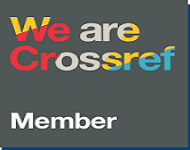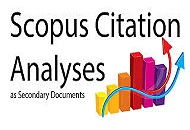Analyzing WhatsApp-Based Learning Interactions: Teaching Skills and Student Responses in Indonesian Higher Education
DOI:
https://doi.org/10.33394/jp.v12i4.16737Keywords:
WhatsApp pedagogy, Teaching skills, Student engagement, Mobile learning, Indonesian higher educationAbstract
This study explores how lecturers' teaching skills and student responses manifest in WhatsApp-based learning environments in Indonesian higher education. Focusing on three classes of an “Introduction to Education” course, the research employs a qualitative descriptive approach and content analysis of chat transcripts and voice notes over 16 weeks. To frame the analysis, Asril’s model of basic teaching skills—covering questioning, explanation, reinforcement, and classroom management—was applied, alongside Hanifi and Rahayu’s taxonomy of student responses, which distinguishes between obedient, independent, pretentious, dependent, and stolid learner behaviors. Trustworthiness was ensured through inter-coder reliability checks and triangulation of text and voice-note data, enhancing the validity of findings. The study also draws on constructivist, connectivist, and rhizomatic pedagogy perspectives, with “rhizomatic” referring to decentralized, non-linear pathways of knowledge building. The results indicate that lecturers primarily used Opening and Closing, Further Questioning, and Reinforcement skills, while students most frequently responded as Independent learners, followed by Obedient and Pretentious types. These findings suggest that WhatsApp can support meaningful teaching–learning interaction, though its design limits collaborative and differentiated instruction. The study highlights the adaptability of core teaching competencies to digital platforms and emphasizes the need for strategic scaffolding to foster learner autonomy. Limitations include the scope of data and a lack of multimodal behavioral insight. The findings have implications for mobile pedagogy, digital curriculum planning, and future research in digitally mediated instruction.
References
Addai-Mununkum, R. (2023). Non-formal education in digital spaces: A digital ethnography of Ghanaian teachers’ use of WhatsApp group. International Journal of Qualitative Research, 3(1), 104-114. https://doi.org/10.47540/ijqr.v3i1.961
Ahmad, R., Mahmud, M. M., Yaacob, Y., & Mohd A’Seri, M. S. (2023). The role of WhatsApp group to support post-pandemic teaching and learning. In Proceedings of the 10th International Conference on Electrical and Electronics Engineering (ICEEE). https://doi.org/10.1109/ICEEE59925.2023.00043
Ajani, A., Khoalenyane, N., & Ajani, O. A. (2023). Using WhatsApp as a tool of learning: A systemic literature review of prospects and challenges. International Journal of Innovative Technologies in Social Science, 3(39), 1–15. https://doi.org/10.31435/rsglobal_ijitss/30092023/8025
Amry, A. B. (2014). The impact of WhatsApp mobile social learning on the achievement and attitudes of female students compared with face-to-face learning in the classroom. European Scientific Journal, 10(22), 116–136. https://test.eujournal.org/index.php/esj/article/view/3909
Asril, Z. (2011). Micro Teaching: Disertai dengan Program Pengalaman Lapangan. Jakarta: Rajawali.
Binsuhaim, A. A. (2025). Students’ use and perceptions of WhatsApp in learning programming. Interactive Learning Environments, 1–17. https://doi.org/10.1080/10494820.2025.2471902
Bottentuit Junior, J. B., Albuquerque, O. C. P., & Coutinho, C. P. (2016). WHATSAPP e suas Aplicações na Educação: uma revisão sistemática da Literatura (WhatsApp in Education: a Systematic Review of the Literature). Revista Educa Online, 10(2), 67–87.
Cetinkaya, L. (2017). The impact of WhatsApp use on success in education process. International Review of Research in Open and Distributed Learning, 18(7), 59–74. https://doi.org/10.19173/irrodl.v18i7.3279
Cormier, D. (2008). Rhizomatic education: Community as curriculum. Innovate: Journal of Online Education, 4(5), Article 2. https://nsuworks.nova.edu/innovate/vol4/iss5/2
Doğan, M. (2023). The WhatsApp application use as a support service in distance education: A case analysis. The Turkish Online Journal of Distance Education, 24(2), 202 - 216. https://doi.org/10.17718/tojde.1096551
Elo, S., & Kyngäs, H. (2008). The qualitative content analysis process. Journal of Advanced Nursing, 62(1), 107–115. https://doi.org/10.1111/j.1365-2648.2007.04569.x
Forman, J., & Damschroder, L. J. (2007). Qualitative content analysis. In G. M. Crabtree & J. M. Miller (Eds.), Advances in Bioethics (Vol. 11, pp. 39–62). Emerald Group Publishing. https://doi.org/10.1016/S1479-3709(07)11003-7
Garrison, D. R., & Vaughan, N. D. (2008). Blended learning in higher education: Framework, principles, and guidelines. John Wiley & Sons, Inc. https://doi.org/10.1002/9781118269558
Hanifi, R., & Rahayu, P. S. (2014). Students’ response towards the teachers’ approach and method of teaching. Jurnal UIN Antasari, 4(1), 60–74. https://jurnal.uin-antasari.ac.id/index.php/let/article/view/1401
Hidayati, A. N., Sri, M., Abdullah, F., Ramalia, T., Yunita, W., & Sulastri, F. (2022). WhatsApp in the Indonesian online EFL learning milieu: How do the students engage? English Franca: Academic Journal of English Language and Education, 6(1), 83–98. https://doi.org/10.29240/ef.v6i1.4136
Khan, I. A. (2020). A synopsis of the WhatsApp-based instruction and ELT pedagogy: Concept, challenge and strategy. International Journal of Linguistics, 12(1), 45-68. https://doi.org/10.5296/ijl.v12i1.16240
Koltay, T. (2016). The media and the literacies: media literacy, information literacy, digital literacy. Media, Culture & Society, 33(2), 211-221. https://doi.org/10.1177/0163443710393382
Lee, C. E., Chern, H. H., & Azmir, D. A. (2023). WhatsApp use in a higher education learning environment: Perspective of Malaysian students on academic performance and team effectiveness. Education Sciences, 13(3), 244. https://doi.org/10.3390/educsci13030244
Makoza, F., & Bagui, L. (2022). Rhizomatic learning and use of mobile instant messaging platforms: Case of a university in South Africa. International Journal of Virtual and Personal Learning Environments, 12(1), 1–17. https://doi.org/10.4018/IJVPLE.295304
Manca, S., & Ranieri, M. (2016). Is Facebook still a suitable technology-enhanced learning environment? An updated critical review of the literature from 2012 to 2015. Journal of Computer Assisted Learning, 32(6), 503–528. https://doi.org/10.1111/jcal.12154
Mansyur, (2017), Ketereampilan Dasar Mengajar dan Penguasaan Kompetensi Guru. El-Ghiroh, 12 (1), 130-147. https://media.neliti.com/media/publications/294797-keterampilan-dasar-mengajar-dan-penguasa-cbb4a996.pdf
Miles, M. B., & Huberman, A. M. (1994). Qualitative data analysis: An expanded sourcebook (2nd ed.). Sage Publications. https://vivauniversity.wordpress.com/wp-content/uploads/2013/11/milesandhuberman1994.pdf
Mtega, W. P. (2021). Using WhatsApp Messenger for improving learners’ engagement in teaching and learning: A case of undergraduate students at Sokoine University of Agriculture Tanzania. Library Philosophy and Practice. https://digitalcommons.unl.edu/libphilprac/4809
Mulyono, H., Suryoputro, G., & Jamil, S. R. (2021). The application of WhatsApp to support online learning during the COVID-19 pandemic in Indonesia. Heliyon, 7(8), e07853. https://doi.org/10.1016/j.heliyon.2021.e07853
Murire, O. T., & Gavaza, B. K. (2023). WhatsApp platform uses in teaching and learning in South African tertiary institutions. International Journal of Learning, Teaching and Educational Research, 22(9), 520-532. https://doi.org/10.26803/ijlter.22.9.28
Mutiani, M., Disman, D., Abbas, E. W., Wiyanarti, E., & Hadi, S. (2022). Putting global education through transcript-based lesson analysis in higher education. Jurnal Pendidikan Progresif, 12(2), 972-980. https://doi.org/10.23960/jpp.v12.i2.202244
Nuuyoma, V., Mhlope, N. J., & Chihururu, L. (2020). The use of WhatsApp as an educational communication tool in higher education: Experiences of nursing students in Namibia. International Journal of Higher Education, 9(5), 105-114. https://doi.org/10.5430/ijhe.v9n5p105
Nugroho, N. (2022). Students’ engagement in online learning using WhatsApp group during COVID-19 pandemic. Linguistics and ELT Journal, 10(1), 23-31. https://doi.org/10.31764/leltj.v10i1.8387
Puppis, M. (2019). Analyzing talk and text I: Qualitative content analysis. In: Van den Bulck, H., Puppis, M., Donders, K., Van Audenhove, L. (eds) The Palgrave Handbook of Methods for Media Policy Research (pp. 367–384). Palgrave Macmillan, Cham. https://doi.org/10.1007/978-3-030-16065-4_21
Rahmadi, I. F. (2020). WhatsApp group for teaching and learning in Indonesian higher education: What’s up? International Journal of Interactive Mobile Technologies (iJIM), 14(13), 150-160. https://doi.org/10.3991/ijim.v14i13.14121
Sandelowski, M. (2000). Whatever happened to qualitative description? Research in Nursing & Health, 23(4), 334–340. https://doi.org/10.1002/1098-240X(200008)23:4<334::AID-NUR9>3.0.CO;2-G
Siemens, G. (2005). Connectivism: A learning theory for the digital age. International Journal of Instructional Technology and Distance Learning, 2. http://www.itdl.org/Journal/Jan_05/article01.htm
Stone, S., & Logan, A. (2018). Exploring students’ use of the social networking site WhatsApp to foster connectedness in the online learning experience. International Journal of Technology Enhanced Learning, 3(1), 44–57. https://doi.org/10.22554/IJTEL.V3I1.28
Syairofi, A., Suherdi, D., & Purnawarman, P. (2023). Using WhatsApp to support English language learning: A systematic review. CALL-EJ, 24(1), 305-337. https://old.callej.org/journal/24-1/Syairofi-Suherdi-Purnawarman2023.pdf
Ujakpa, M. M., Heukelma, D., Lazarus, V. K., Neiss, P & Rukanda, G. D. (2018). Using WhatsApp to Support Communication in Teaching and Learning. IIMC International Information Management Corporation. https://www.researchgate.net/publication/326683148_Using_WhatsApp_to_Support_Communication_in_Teaching_and_Learning
Vygotsky, L. S. (1978). Mind in society: The development of higher psychological processes. Harvard University Press.
Yunus, M. M., Hashim, H. U., & Hashim, H. (2019). Massive Open Online Courses: En route to communication skills acquisition. Arab World English Journal, 5, 98-109. https://doi.org/10.24093/awej/call5.8
Zahro, F. (2022). Uncovering university students’ communication patterns and limiting factors in an Indonesian online learning context using WhatsApp. Erudita: Journal of Education Innovation, 2(2), 45–55. https://doi.org/10.28918/erudita.v2i2.6158
Zhakata, N. (2022). 2—A framework for distanced e-learning in digitally constrained communities using WhatsApp. In U. G. Singh, C. S. Nair, C. Blewett, & T. Shea (Eds.), Academic Voices (pp. 15–28). Chandos Publishing. https://doi.org/10.1016/B978-0-323-91185-6.00023-9
Published
How to Cite
Issue
Section
Citation Check
License
Copyright (c) 2025 The Author(s)

This work is licensed under a Creative Commons Attribution-ShareAlike 4.0 International License.
License and Publishing Agreement
In submitting the manuscript to the journal, the authors certify that:
- They are authorized by their co-authors to enter into these arrangements.
- The work described has not been formally published before, except in the form of an abstract or as part of a published lecture, review, thesis, or overlay journal.
- That it is not under consideration for publication elsewhere,
- That its publication has been approved by all the author(s) and by the responsible authorities tacitly or explicitly of the institutes where the work has been carried out.
- They secure the right to reproduce any material that has already been published or copyrighted elsewhere.
- They agree to the following license and publishing agreement.
Copyright
Authors who publish with Jurnal Paedagogy agree to the following terms:
- Authors retain copyright and grant the journal right of first publication with the work simultaneously licensed under a Creative Commons Attribution License (CC BY-SA 4.0) that allows others to share the work with an acknowledgment of the work's authorship and initial publication in this journal.
- Authors are able to enter into separate, additional contractual arrangements for the non-exclusive distribution of the journal's published version of the work (e.g., post it to an institutional repository or publish it in a book), with an acknowledgment of its initial publication in this journal.
- Authors are permitted and encouraged to post their work online (e.g., in institutional repositories or on their website) prior to and during the submission process, as it can lead to productive exchanges, as well as earlier and greater citation of published work.
Licensing for Data Publication
-
Open Data Commons Attribution License, http://www.opendatacommons.org/licenses/by/1.0/ (default)






